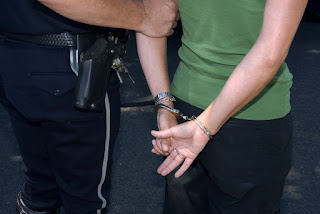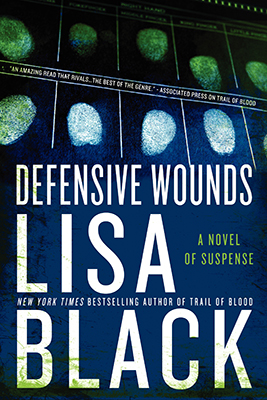 by Lisa Black
by Lisa Black
Here in Florida we recently had the first anniversary of the Parkland school shooting, making me think about research I did for my last book, Suffer the Children. What, exactly, should we do with children who have committed, perhaps not mass murder, but violent crimes?
About the worst thing you can do with a problem child is put them in jail. Isolated from their families and meaningful intervention programs, their education stunted, this nearly guarantees that they will remain a problem. When two-thirds of nonviolent first time offenders never reoffend without any sort of sanction or intervention, whereas forty percent of incarcerated juveniles will wind up in adult prison later on, obviously the best thing to do is to keep juveniles out of custody wherever possible.
Bad behavior (especially drug use) is often a mechanism to avoid the real problems of abuse and neglect. The most important thing for children to learn in terms of functioning in society is self-control and empathy, and those things have to be learned within a family. Unfortunately too many families now depend on day cares, schools and prisons to teach their children what they should have. Quality child care is essential but exorbitantly expensive in all fifty states. On top of that, schools have turned to zero-tolerance policies instead of increasing the mental health screening and services so desperately needed. With the increasing pressures of standardized testing, schools in some states (like Florida) have been accused of shedding their low-achieving students into detention facilities and ‘alternative’ high schools in order to get their test averages up. Schools in other states (such as Ohio) are unable to expel even extremely disruptive students and have to take on extra staff to provide one-on-one monitors. But most of the disabled children in schools are learning disabled (not physical), and more and more of a school’s budget goes to this sector. Schools need help to screen, monitor and intervene if necessary the lives of their students, including simply keeping track of who is coming to school and who isn’t. Truancy sounds like a minor thing, the plot of a Little Rascals skit, but it is very important. It’s the first step for all delinquency.
Schools in other states (such as Ohio) are unable to expel even extremely disruptive students and have to take on extra staff to provide one-on-one monitors. But most of the disabled children in schools are learning disabled (not physical), and more and more of a school’s budget goes to this sector. Schools need help to screen, monitor and intervene if necessary the lives of their students, including simply keeping track of who is coming to school and who isn’t. Truancy sounds like a minor thing, the plot of a Little Rascals skit, but it is very important. It’s the first step for all delinquency.
Also, increasing numbers of children in America, particularly the ‘problem’ ones, are on psychotropic medications. One study showed that fifty percent of children in Florida shelters were on psychotropic meds.
Of course, never putting kids in jail wouldn’t work either. All bad-behaving kids, whether their act is skipping school or killing somebody, need to face appropriate punishment, or there is no reason for them to stop.
So what to do? Read up on child delinquency and you will quickly hear tell of ‘the Missouri model.’ Since the 1980s, the Missouri Division of Youth Services has experimented and tweaked their system, boiling it down to six distinct points (source: Anne E. Casey Foundation):
1. Missouri places youth who require confinement into smaller facilities located near the youths’ homes and families, rather than incarcerating delinquent youth in large, far-away, prisonlike training schools.
2. Missouri places youth into closely supervised small groups and applies a rigorous group treatment process offering extensive and ongoing individual attention, rather than isolating confined youth in individual cells or leaving them to fend for themselves among a crowd of delinquent peers.
3. Missouri places great emphasis on (and achieves admirable success in) keeping youth safe not only from physical aggression but also from ridicule and emotional abuse; and it does so through constant staff supervision and supportive peer relationships rather than through coercive techniques that are commonplace in most youth corrections systems.
4. Missouri helps confined youth develop academic, pre-vocational, and communications skills that improve their ability to succeed following release—along with crucial insights into the roots of their delinquent behavior and new social competence to acknowledge and solve personal problems.
5. Missouri reaches out to family members and involves them both as partners in the treatment process and as allies in planning for success in the aftercare transition, rather than keeping families at a distance and treating them as the source of delinquent youths’ problems.
6. Missouri provides considerable support and supervision for youth transitioning home from a residential facility—conducting intensive aftercare planning prior to release, monitoring and mentoring youth closely in the first 15 crucial weeks following release, and working hard to enroll them in school, place them in jobs, and/or sign them up for extracurricular activities in their home communities.
All this individualized attention sounds expensive—except it isn’t, relatively. With smaller facilities and less children in custody overall, Missouri spends less money on its youth than most states and substantially less than many (including Florida).
Is it perfect? Of course not—nothing ever is, right? Missouri has reoffenders and recidivists…just less than in other states. So as school shootings become commonplace and at least twenty-three states now have no minimum age at which to try juveniles in adult court, it’s nice to know that occasionally progress is made toward a brighter future for all.
Have you had any experience with your local juvenile justice system? What do you think needs to be changed?
















































What an interesting post about ways to handle these problems — I had no idea that Missouri had developed some a good model to treat these youthful offenders. Thanks for calling attention to this important issue, Lisa – let's hope more people pay attention so our young people can have a better future!….Karna Bodman
I had no idea that Missouri was so progressive on juvenile justice. Good to know that there are models out there. And, as someone who spent three years teaching, may I say that there are steps to take before a child winds up in the justice system. Let's start with really investing in our schools, with small class sizes, so kids can get the individual attention they need. Let's put resources into good and affordable day care – because in too many families, both parents have to work – and the options are just not that good. A good post to start an important discussion.
I'd heard of the Missouri model but had no idea what exactly it contained. This is humane — and commonsense. It is cruel & idiotic the way so many juvenile defender systems handle kids — making them more violent and giving them even less reason to join society as constructive members. Thank you, Lisa, for this important blog!
This makes so much sense, Lisa. But how to get the word out? Sandy's right in that we need to invest in smaller class sizes and good day care. Alas, I fear it is an uphill battle. That doesn't mean we shouldn't try.
That 40% statistic of juveniles incarcerated ending up back in prison as adults shook me. Sounds like this approach by Missouri is the way to go. Anything to reduce that statistic going forward. Thanks for the interesting and eye-opening post!
I've always been on the fence about class sizes, because I'm sure there was 30 kids in every class when I was in grade school and high school. But it was easier then for teachers to maintain control. Today it's a different story.
Regarding schools, there's a great deal of variation from state to state, too. In Florida problem children are expelled and go to 'alternative' high schools. In Ohio, where my sister is a school nurse, they can't expel anyone and instead have to pay for individual tutors and guidance counselors to stay with the kid all day.
My husband was a teacher for 37 years. He absolutely believes that class size makes a difference. I think that you’re right about it being different today. No doubt due to no one being able to expel problem children.